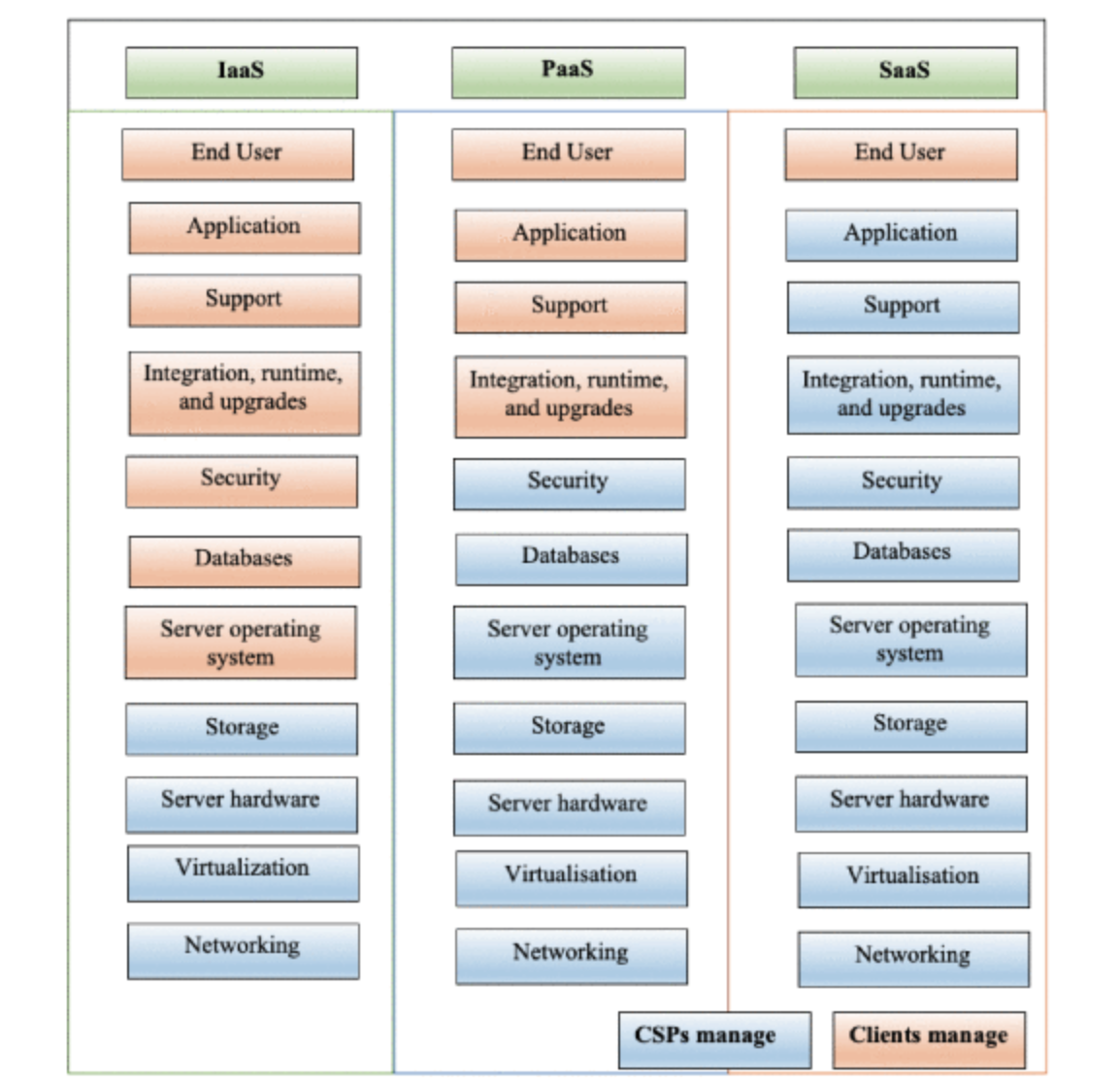Understanding the SaaS service model
In an earlier blog post, we discussed at a high level the differences between the three cloud offerings of IaaS, PaaS, and SaaS. You hear consultants warn about making sure you understand your business process and that your data and system is fully tested before you go live. My question to the blog universe is this: “Do you know why it’s important to fully test your SaaS system before you go live?”
Mathrani et al. (2023) explain the differences between what a cloud service provider (CSP) manages and what a client manages based on IaaS, PaaS, and SaaS service models. The authors present the reader with the graphic below that demonstrates the vast differences among the three.
It is vital to look at the differences between these three service models and understand what you are purchasing when you move to an ERP cloud SaaS system. When you purchase a SaaS solution, you are paying to rent the system or service on a recurring fee basis. This is why there are no customizations, but the system is highly configurable. But wait, there is something even more important to call out!
Institutions leaving their legacy systems are accustomed to having information technology staff that can write a script from an access prompt to update or change data based on any set of factors. This is no longer an option with a SaaS product. Customers do not have direct access to the database to make any changes, updates, or manipulations to the data. Access is only available from the front end solution provided by the CSP. Let me say that again.
Customers do not have direct access to the database to make any changes, updates, or manipulations to the data.
If a customer goes live without testing processes from beginning to end, there is a risk that the data being placed in the system will not work with every business process. If changes are needed, it requires a hand to keyboard, step-by-step per record approach to change data. In addition, if there is a need for mass data updates, clients must use a certified partner to perform this type of function because these partners have been extensively trained by the CSP to ensure that clean data practices are utilized and any data manipulation will not have a detrimental impact on the database or the server. Remember, you are renting space that other institutions are using with you, and one wrong code could have a substantial impact to other clients.
Now, this is in no way a blog to scare you away from implementing a SaaS product. The benefits of lower upfront costs, lower operating costs, rapid implementation, scalability, use of advanced technology, rapid updates and upgrades, improved system availability and disaster recovery, and better security standards alone are worth the move to a cloud ERP system (Abd Elmonem et al., 2016). The point of this is that you must assess your system from beginning to end before moving to production. There are significant risks when clients choose to approach SaaS ERP systems as they approach on-premises, hosted, or even IaaS systems.
This is why it is so important to plan for a SaaS ERP implementation up front. Build in key dates to perform an internal assessment on readiness. Take the time to do a full business process mapping exercise to understand how your institution not only performs business now, but how it will perform business after going live. Work with your data conversion team to have multiple conversions to test with your configuration and then repeat this as often as necessary. Keep change management actively involved in your implementation. And ultimately, test the system and if you think you have tested enough, test again.
It is understanding SaaS and the changes required to make it successful and then communicating this understanding consistently to the institution or organization that will be a key differentiator of a successful implementation.
References
Abd Elmonem, M. A., Geith, M. H., & Nasr, E. S. (2016). Benefits and challenges of cloud ERP systems – A systematic literature review. Future Computing and Informatics Journal, 1(1-2), 1–9. https://doi.org/10.1016/j.fcij.2017.03.003
Mathrani, S., Tongsuksai, S., & Weerasinghe, K. (2023). Influential characteristics and benefits of cloud ERP adoption in new zealand smes: A vendors’ perspective. IEEE Access, 11, 1–1. https://doi.org/10.1109/access.2023.3254500
